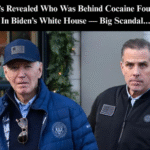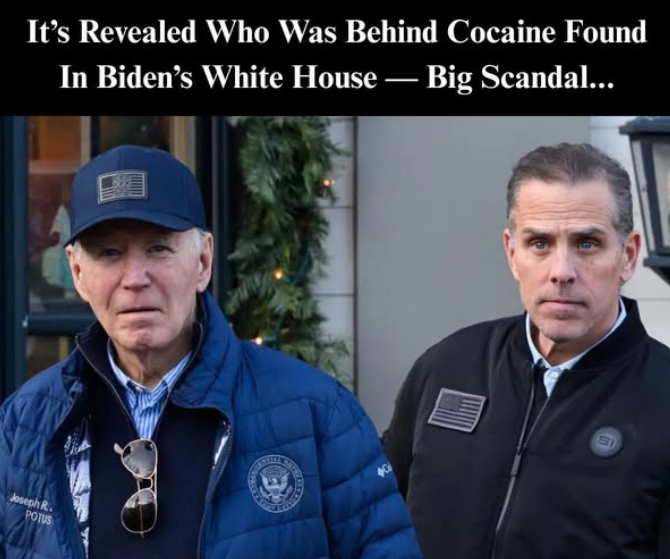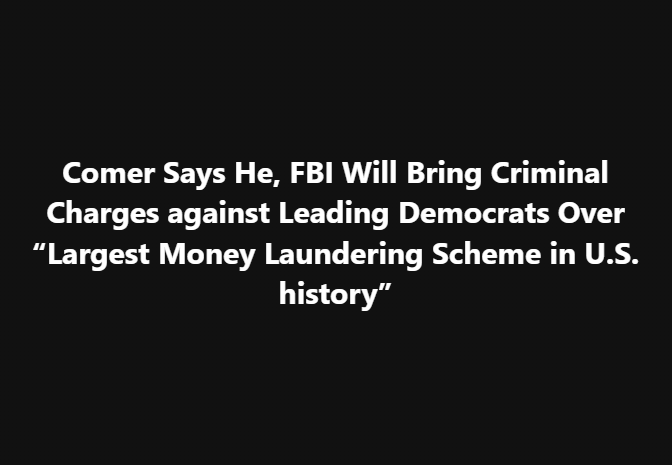While recent headlines have diverted public attention, a newly resurfaced report is reigniting concerns about one of the more unusual incidents of Joe Biden’s presidency: the discovery of cocaine inside the White House in July 2023. The report sheds new light on how the case was handled — and possibly mishandled — by top officials, including former Secret Service Director Kimberly Cheatle.
According to journalist Susan Crabtree of RealClearPolitics, who has tracked this story from the beginning, internal records suggest the Secret Service moved quickly to dispose of the cocaine — just one day after the investigation was abruptly closed. Documents indicate that the agency handed over the substance for destruction before fully addressing questions about its origin.
Crabtree reports that the decision to destroy the cocaine may have sparked internal disagreement. A senior official who reportedly objected to the move was overruled, with Cheatle signing off on the final decision.
Newly released documents, obtained through a Freedom of Information Act (FOIA) request, show that the cocaine was sent to the D.C. Metropolitan Police for incineration. However, the destruction document from the DEA lacks a date, and no official confirmation has surfaced proving the substance was ever actually destroyed.
Additional records reveal that the cocaine underwent testing by the Secret Service, D.C. Fire Department hazmat crews, and the FBI before being placed back in Secret Service custody on July 12. Two days later, it was reportedly turned over to local police for disposal. The entire case was closed just 11 days after the initial discovery.
When questioned about the final handling of the cocaine, D.C. police redirected the inquiry toward the FBI. Still, there is no documentation verifying whether the incineration took place — and no chain of custody has been made public.
Despite the explosive nature of the case, there appears to be minimal momentum toward reopening the investigation. Critics argue that not enough was done to preserve the evidence, and that the situation was quietly swept aside.
Former Secret Service agent and current media figure Dan Bongino recently commented on the matter, suggesting further developments are likely.
“Some people brush this off online, saying it’s not a big deal,” Bongino remarked. “But I care. How can a suspicious substance make it into one of the most secure buildings in the world without answers? We’re working to get to the bottom of it.”
When the Secret Service closed the investigation on July 13, spokesperson Anthony Guglielmi explained that there were no viable leads to pursue. He also stated that forensic testing from the FBI failed to produce fingerprints or usable evidence for comparison.
However, neither the Secret Service nor the FBI has released any lab reports publicly. This lack of transparency has drawn criticism from forensic experts who believe the only way to determine whether the baggie held usable DNA is to retest it — something now impossible if the evidence was indeed destroyed.
Gary Clayton Harmor, a veteran forensic DNA specialist with the Serological Research Institute in California, emphasized the variability in forensic lab approaches.
“Some labs are willing to test even limited samples, while others will pass if they think the sample isn’t sufficient for a national database search,” Harmor said. “The FBI tends to be very cautious. If they determined there wasn’t enough material, that could explain it — but ultimately it depends on the lab’s judgment and methods.”
As questions continue to mount over the handling of the case, critics argue that the public still doesn’t have a full picture of what really happened inside the White House — or who was responsible for bringing a controlled substance into one of the nation’s most secure locations.










